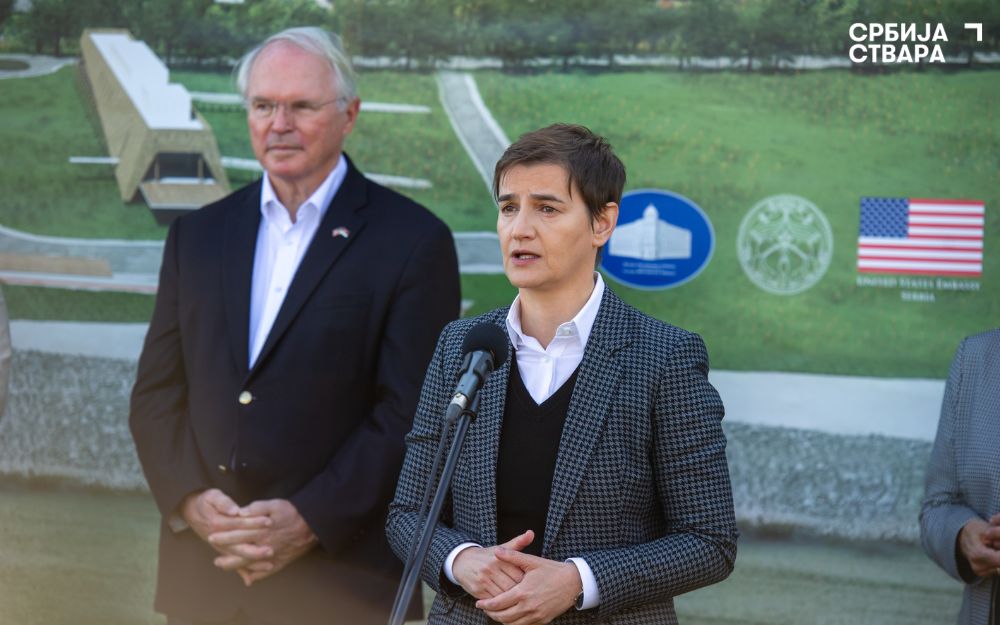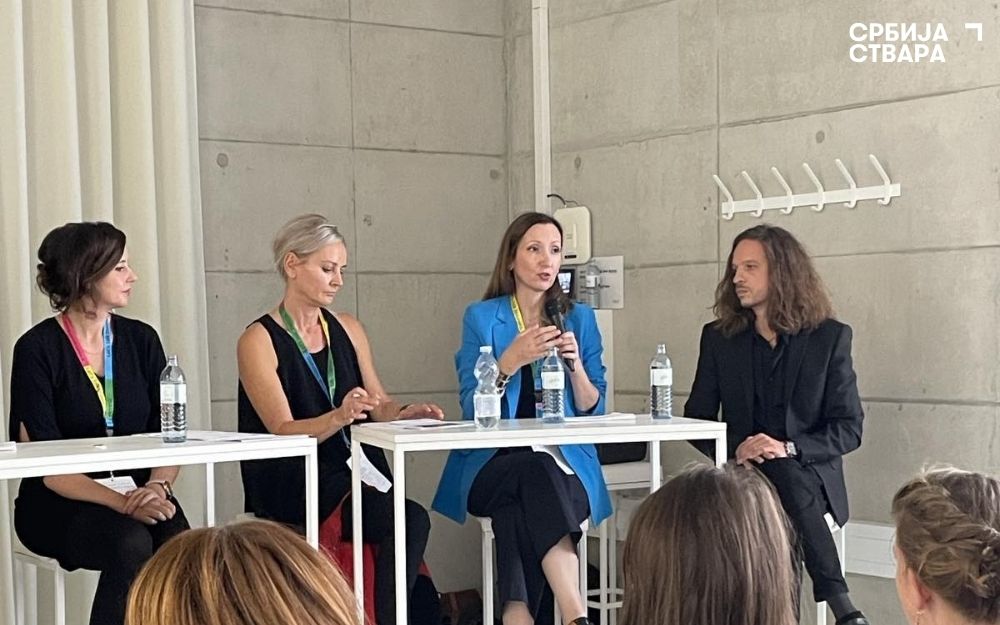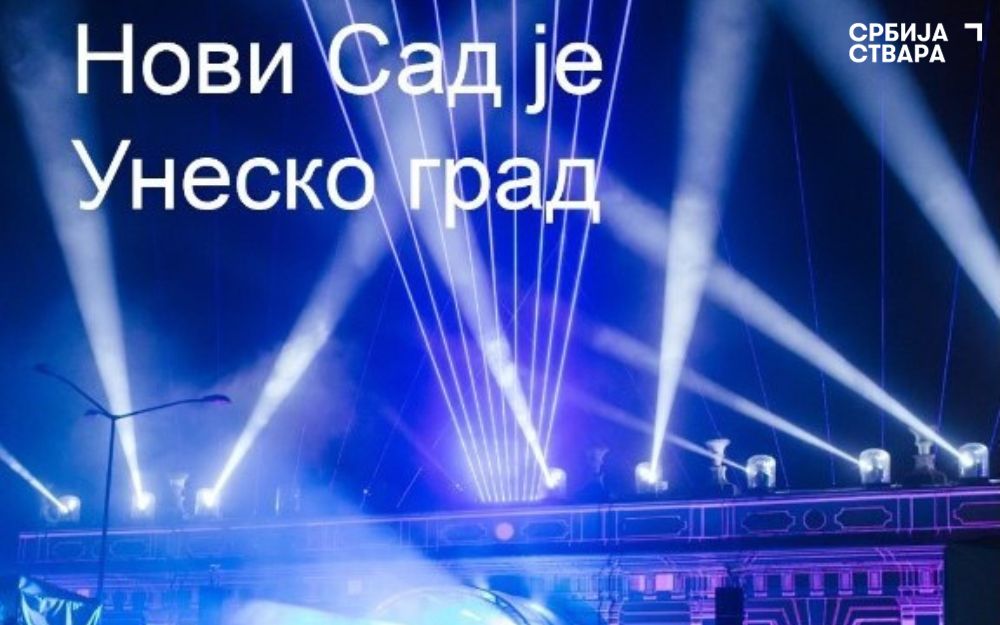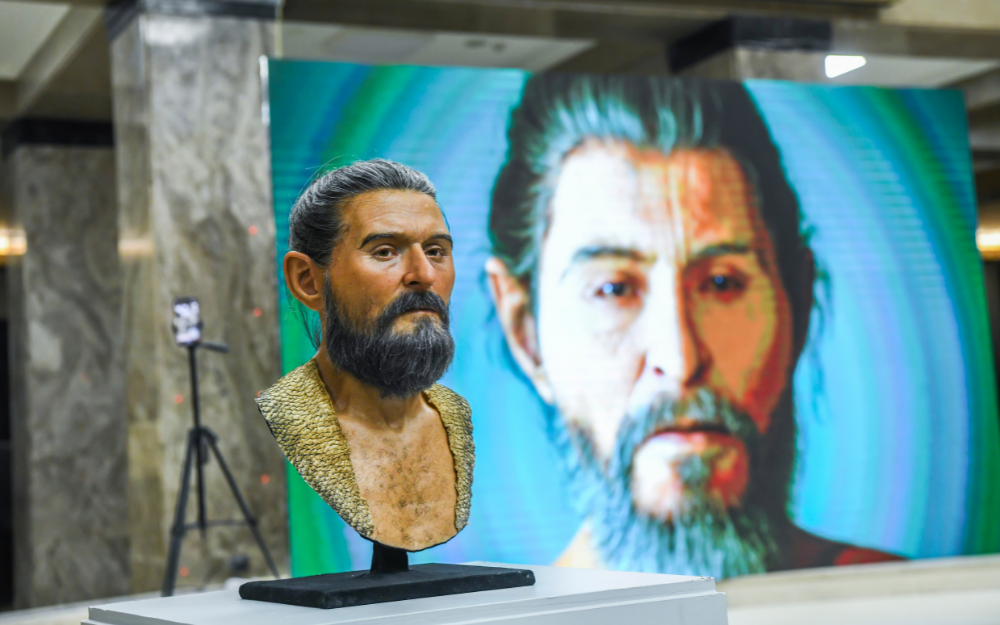Vinča is saved!
ПОДЕЛИ
“My only message is that today we celebrate the day when we saved the archaeological site Belo Brdo in Vinci!” – said Ana Brnabić, Prime Minister of the Republic of Serbia today during her visit to the archaeological site Belo Brdo in Vinča, in the presence of Maja Gojković, Vice President of the Government of the Republic of Serbia and Minister of Culture, H.E. E. Christopher Hill, Ambassador of the United States of America and Dubravka Đukanović, Director of the Republic Institute for the Protection of Cultural Monuments, on the occasion of the completion of the work on the first phase of rehabilitation.
After decades of neglect of this archaeological site, in 2021, the Government of the Republic of Serbia started the implementation of the capital three-year project “Reconstruction, revitalization and presentation of the archaeological site Belo Brdo in Vinča”, with the support of the Embassy of the United States of America. The implementation of the project implies an initial investment by the Government of the Republic of Serbia of 364,400,000 dinars, i.e. about 3 million euros, and in addition to the capital project, the rehabilitation of the site was also supported by the Government of the United States of America through the Ambassador’s Fund for the Protection of Cultural Heritage, in the amount of 475,000 dollars.
“We are on a site that preserves a 7,000-year-old treasure. Although it was protected in 1965, there was no investment in it for decades, for some strange reasons the site was constantly collapsing, the protected zone was constantly reduced. For the first time in decades, we stopped the deterioration of the locality, and that is the most important thing we have done. The first step in a long journey, thanks to the partnership with the United States of America and the Ambassador’s Fund for the Protection of Cultural Heritage, we have completed – we have protected the site from erosion and deterioration, so that we can sleep peacefully and know that what has been repeated all these years will not be repeated – and that is that part of the archaeological site disappears into the Danube every year. The next steps are the completion of the collector and wastewater treatment system, the protection of the Bolečica River, and the collector will solve the problems both for this archaeological site and for the entire settlement of Vinča in the Belgrade municipality of Grocka. After that, we will begin work on the coastal fort, pedestrian and bicycle path and start the revitalization of the entire site. The third thing is the construction of a scientific center for Neolithic research, and the fourth is the construction of a visitor center. We will invest 10 million euros in this entire project over the next three to four years, of which at least one million and five hundred thousand euros will be invested by the City of Belgrade in the collector for the collection and purification of waste water, everything else will be invested from the budget of the Government of the Republic of Serbia, which of course will mean the most to the citizens of Gročka. With this project, we show a completely different attitude towards cultural and historical heritage, awareness and conscientiousness, and in addition a completely different attitude towards what we have in the Republic of Serbia.” – added Ana Brnabić, Prime Minister of the Republic of Serbia, today during her visit to the archaeological site Belo Brdo in Vinča.
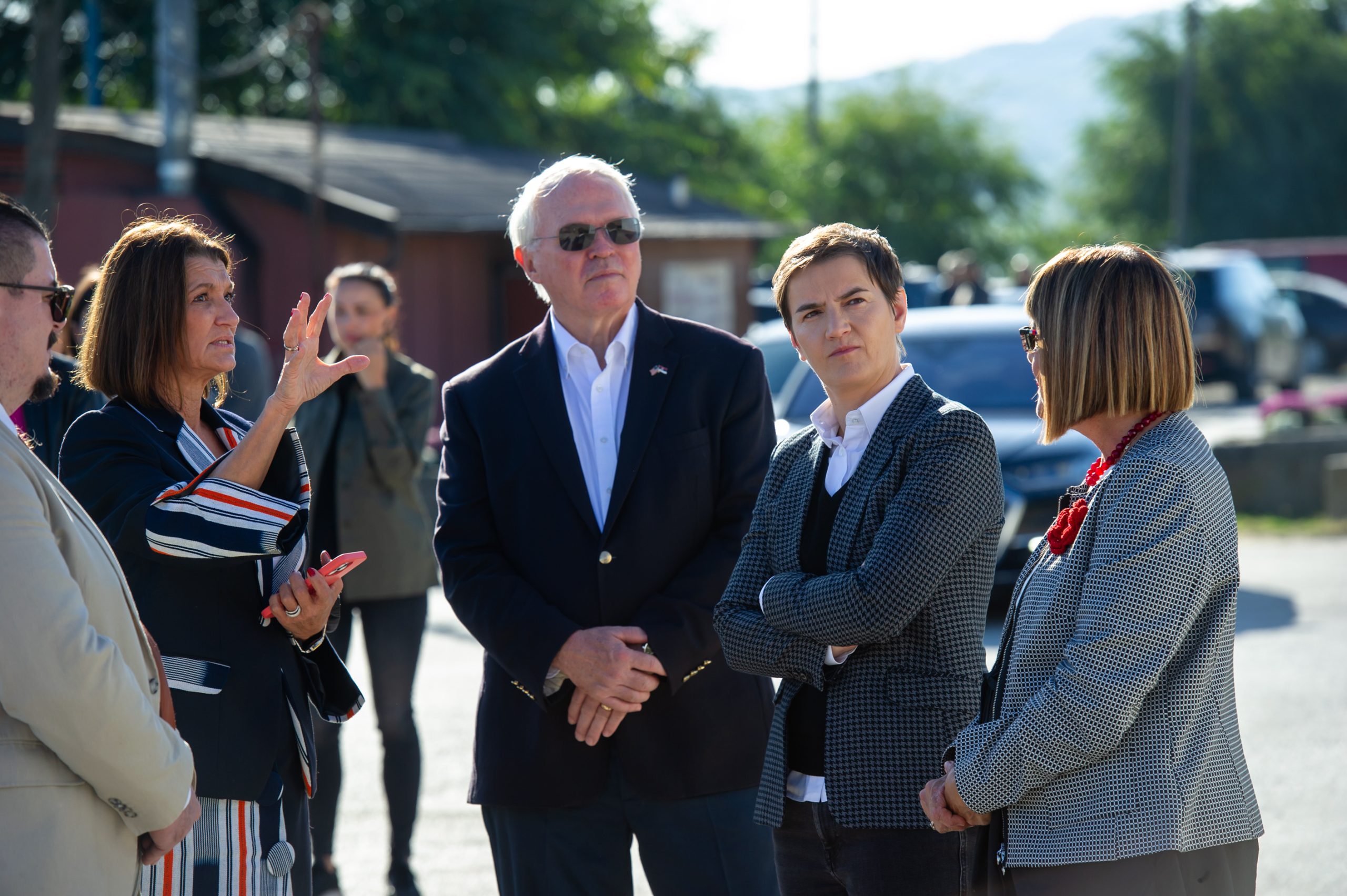
The Belo Brdo archaeological site in Vinča is one of the most important sites of Neolithic culture, known for the beginnings of urban life in communities, the development of creativity and artistic craftsmanship, as well as the technological revolution – the first metal smelting in the world.
“The Embassy of the United States of America is very honored to be able to participate in this project in this way. Of course, the more fun part of the project is just getting started, to see what is in the layers of this thick soil, but before that we had to stabilize it. Stabilization is a very important factor in many aspects of life, and as we can see in this part of cultural heritage protection. The protection of the national cultural heritage is a support for the understanding of our past, which is very complex in itself, perhaps as complex as thinking about what kind of future awaits us. I especially want to emphasize how much pleasure it was to cooperate with scientists in Serbia – archaeologists and all the people who were involved in this project. Contemporary Serbia has a lot of talent, and it’s wonderful to see that talent harnessed to an understanding of the past.” – pointed out H. E. Christopher Hill.
The project of the first phase of rehabilitation, implemented in 2023, which was supported by the Ambassador’s Fund for the Protection of Cultural Heritage, involves the construction of reinforced piles in the area of the Danube embankment in front of the site, protecting the most vulnerable sector of the archaeological site Belo Brdo in Vinča. The installed pile curtain stopped the terrain from sliding and enabled stabilization for further archaeological research. In other sectors of the locality, a network of instruments has been installed that will enable the most up-to-date monitoring in the area of the entire locality. In this stage of rehabilitation, the construction of a wall made of reinforced sediment along the entire length of the site was carried out, which has the function of protection from the high waters of the Danube, as well as the effect of a counterweight that stabilizes the landslide. By rehabilitating the landslide, Vinča was protected and saved.
“The first phase of rehabilitation, which was completed at the end of September this year, was a prerequisite for the arrangement of the narrowest zone of the site, but also the construction of the accompanying infrastructure and facilities for the purpose of research, presentation, promotion of the site, as well as the arrangement of a wider area within the settlement of Vinča. The total value of the works on the construction of the 135-meter-long protective structure on the area of the coastal fort, which consists of a curtain of reinforced concrete piles with a counterweight of reinforced soil, amounted to 141 million dinars. The decision on the eventual construction of another protective structure made of piles will be made based on the results of soil movement measurements, which will be read over a longer period of time with twenty measuring devices installed in the area of the site during the realization of rehabilitation works. – said Dubravka Đukanović, director of the Republic Institute for the Protection of Cultural Monuments.
Through this capital project, the Government of the Republic of Serbia will invest more than 3 million euros in order to preserve the site and make it not only a tourist destination, but also a center of excellence for the study of Neolithic culture in Europe.

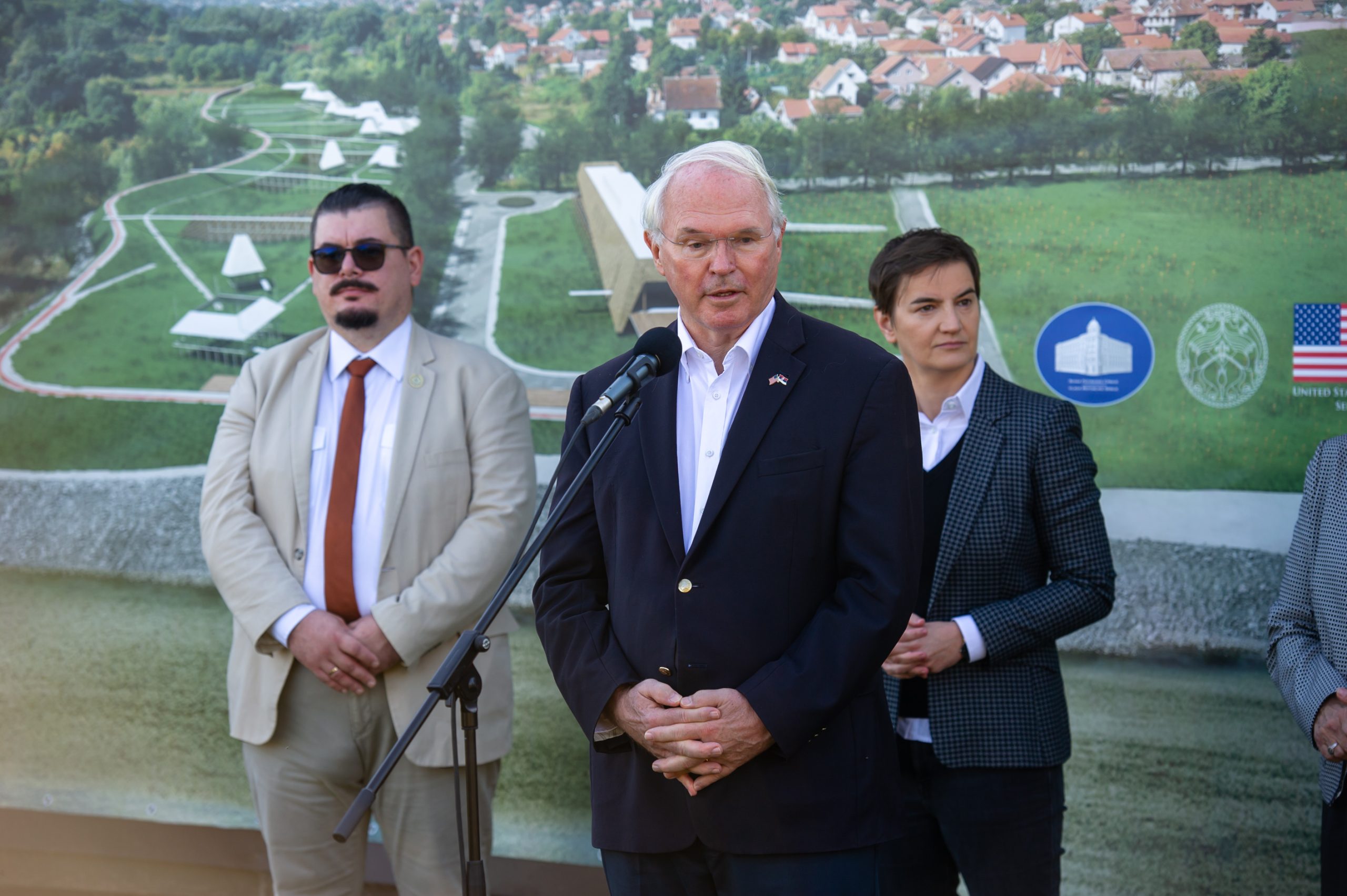
The rehabilitation of the landslide is the first step in the arrangement of the site according to the adopted architectural and urban planning solution, in order to make the archaeological site Belo Brdo in Vinča an indispensable stop on the tourist and cultural map of Europe. We remind you that the arrangement solution, adopted at a public international architectural competition, involves the repurposing of the narrowest zone of the site so that Belo brdo in Vinča becomes a kind of open-air museum, the construction of a Visitor Center, the arrangement of the banks of the local Bolečica and Danube rivers, as well as the construction of a Scientific and Research Center. All of the above reflects the integral development of the locality based on the protection of cultural heritage, the promotion of tourism and the development of scientific and research activities.
The capital project is implemented by the Republic Institute for the Protection of Cultural Monuments, in direct cooperation with the national platform Serbia creates within the Cabinet of the President of the Government of the Republic of Serbia, the Ministry of Culture, the City of Belgrade and the Museum of the City of Belgrade.

